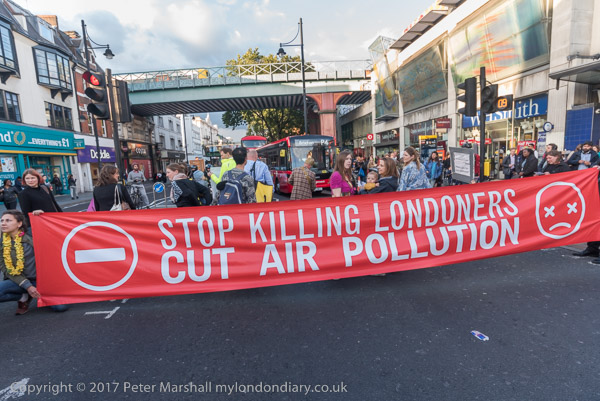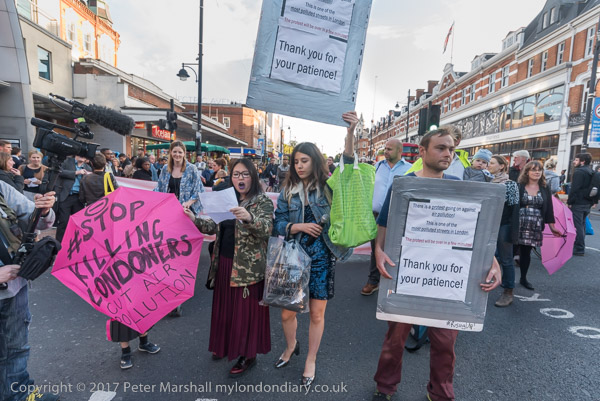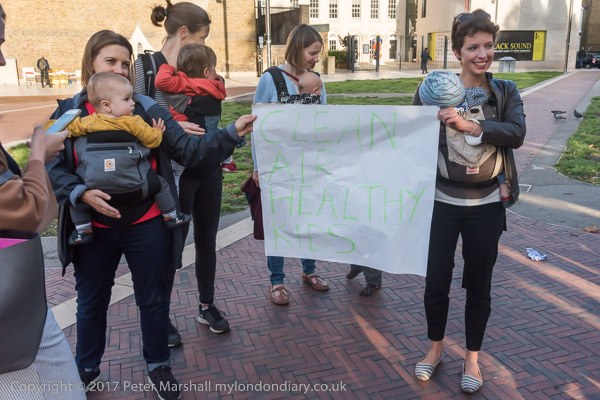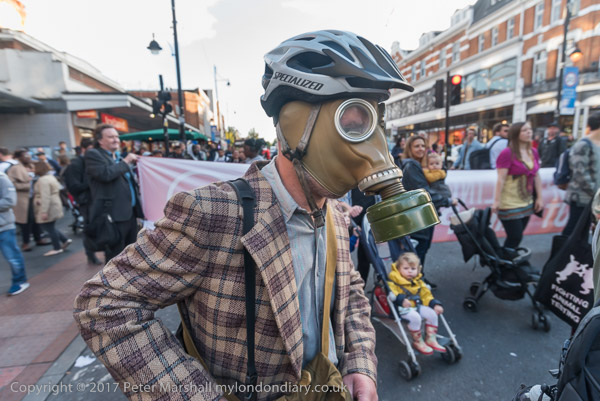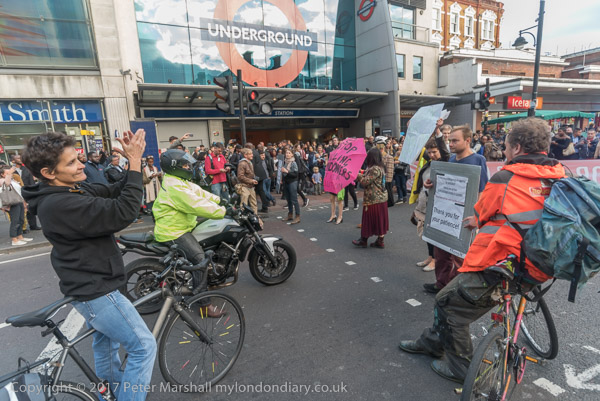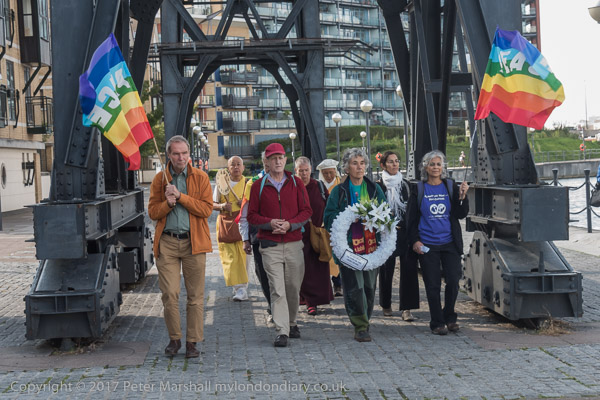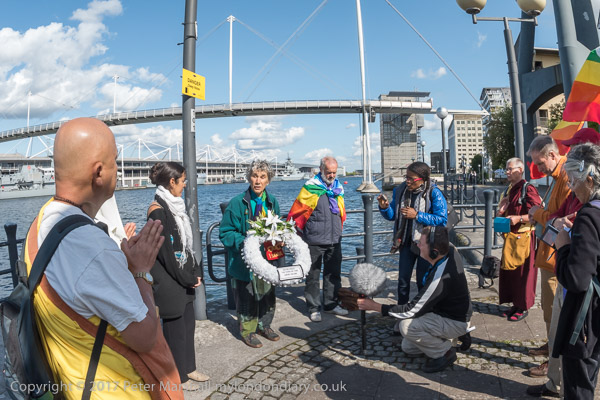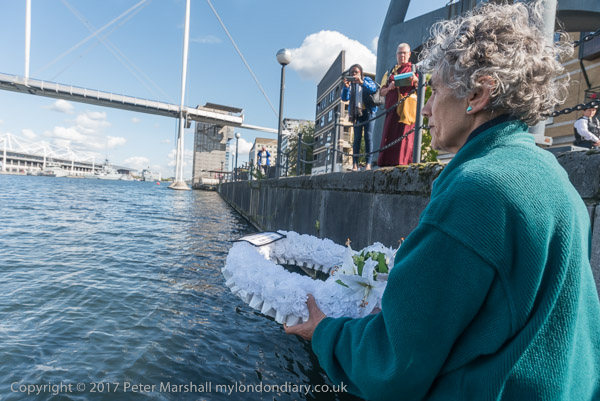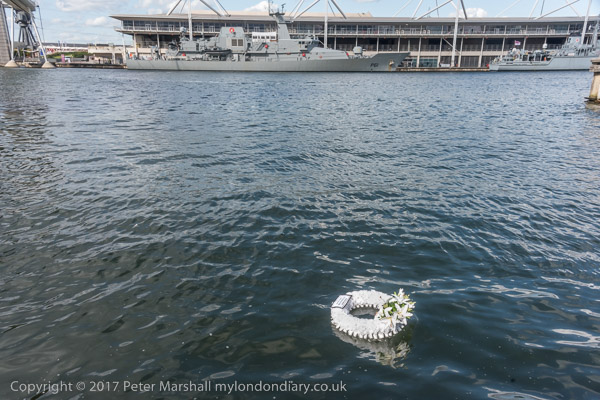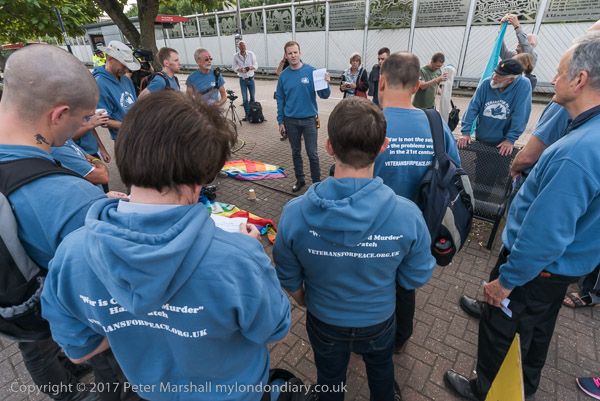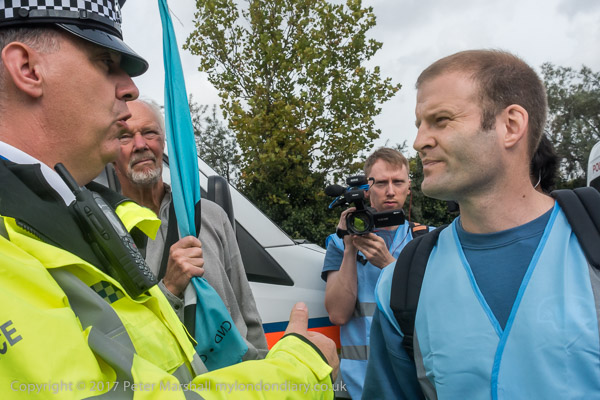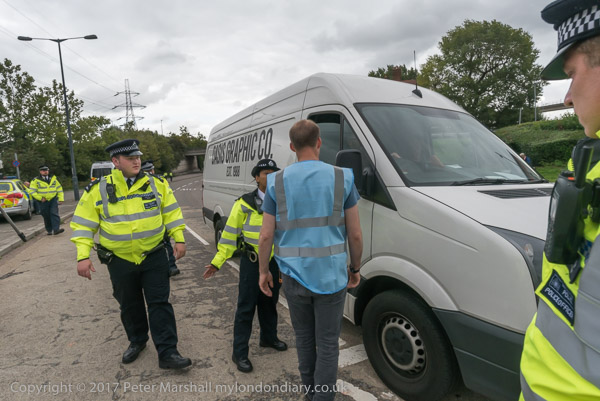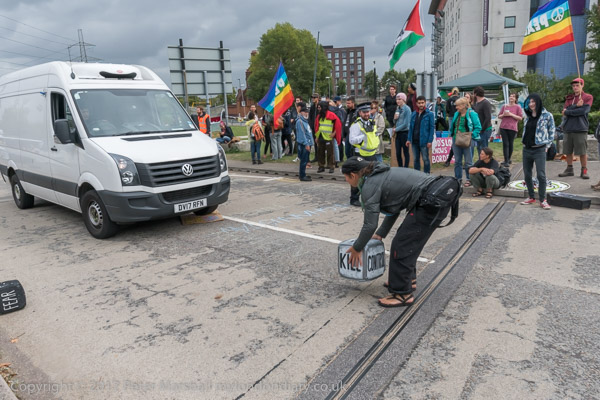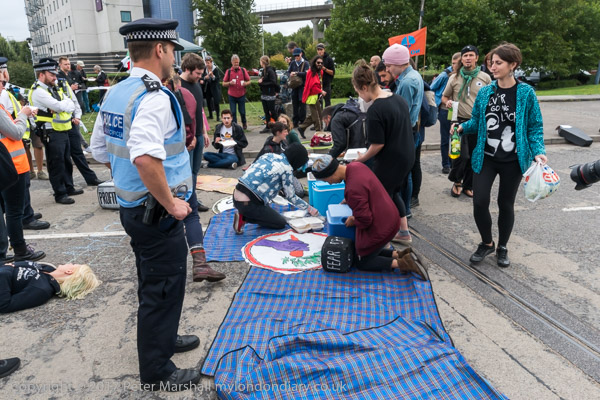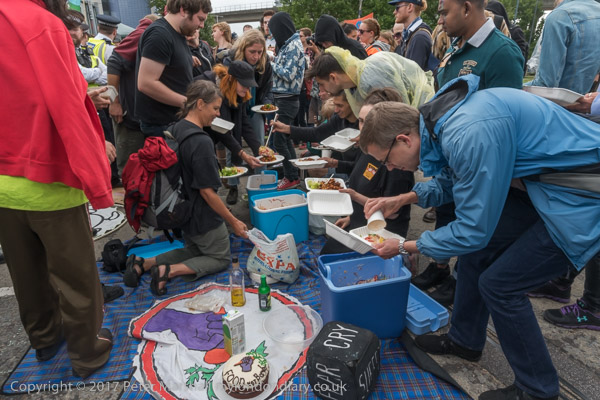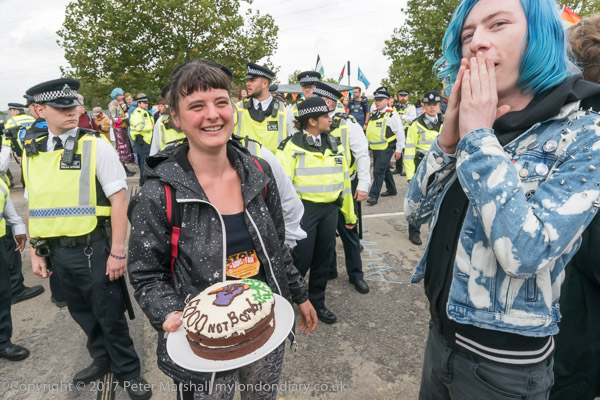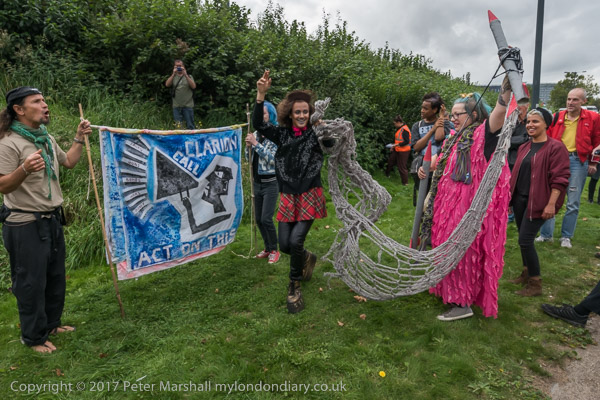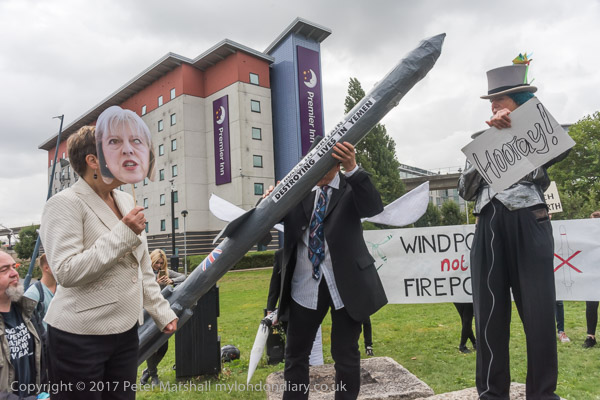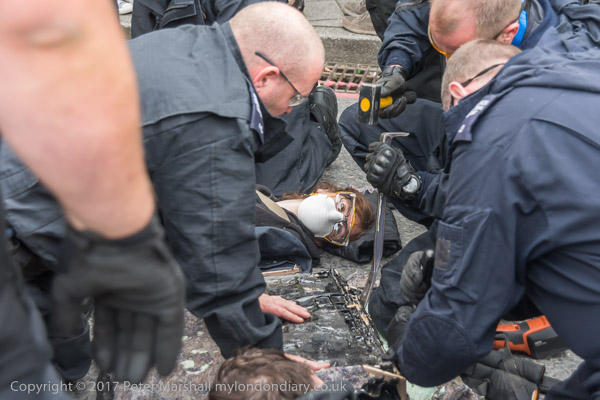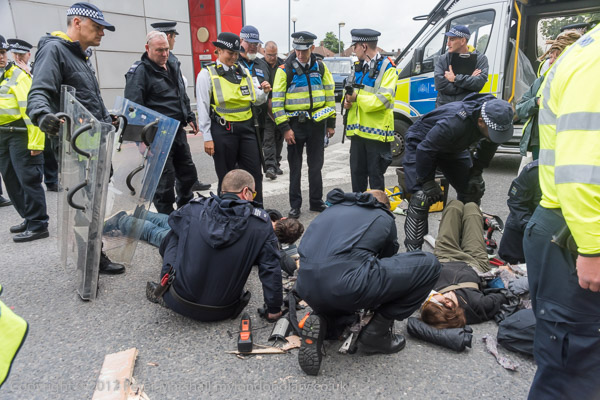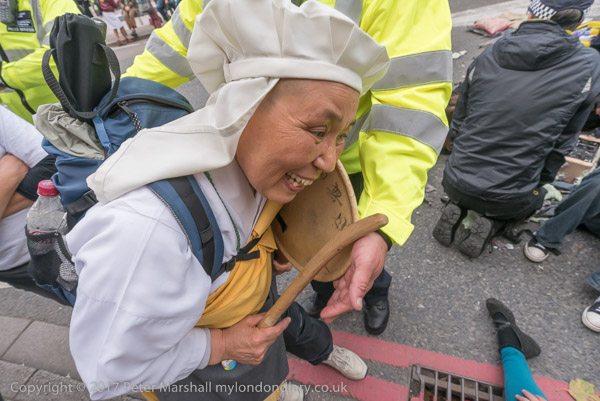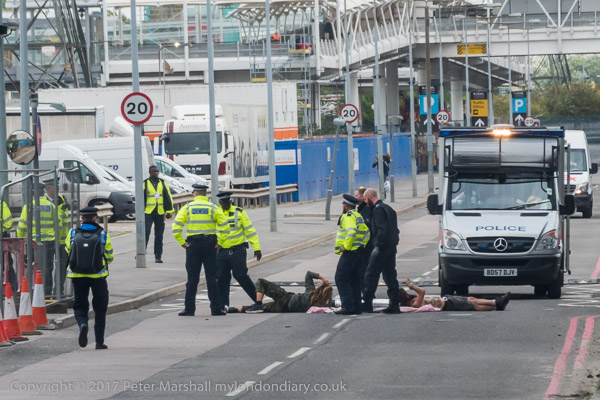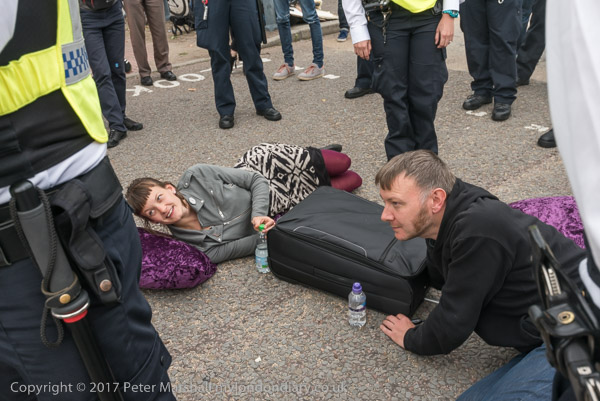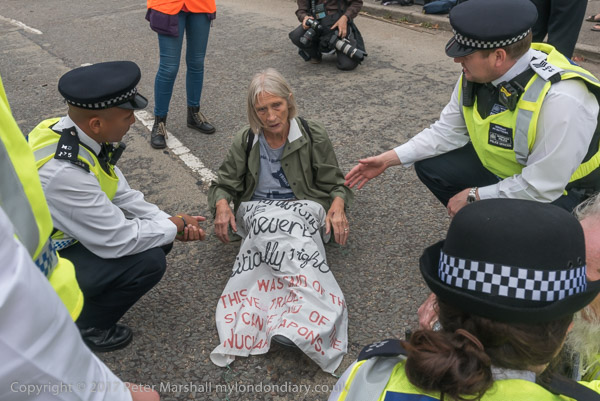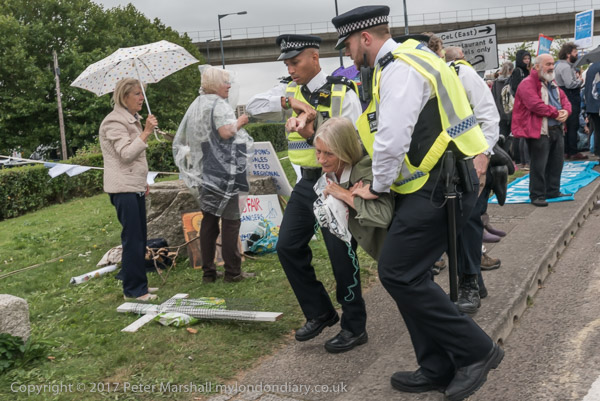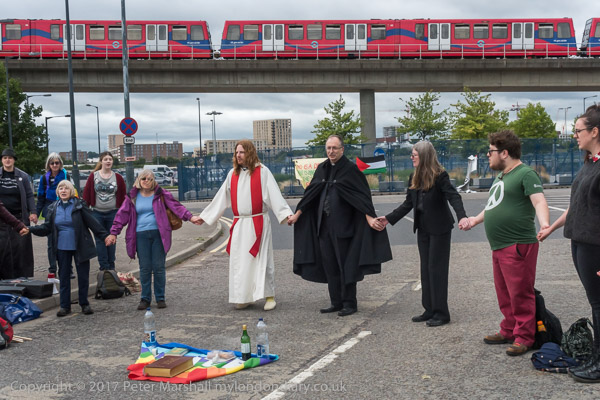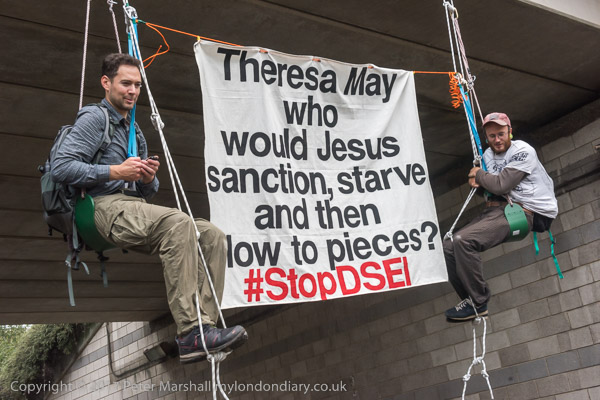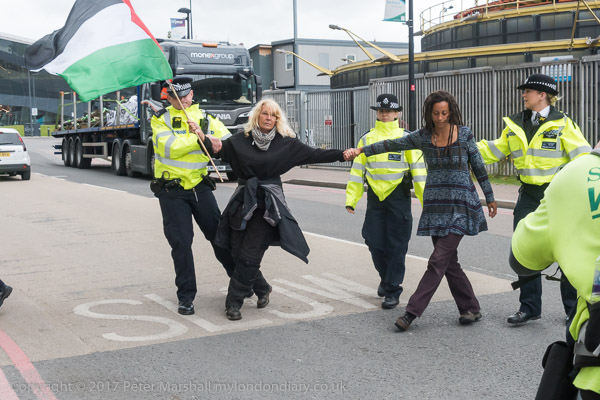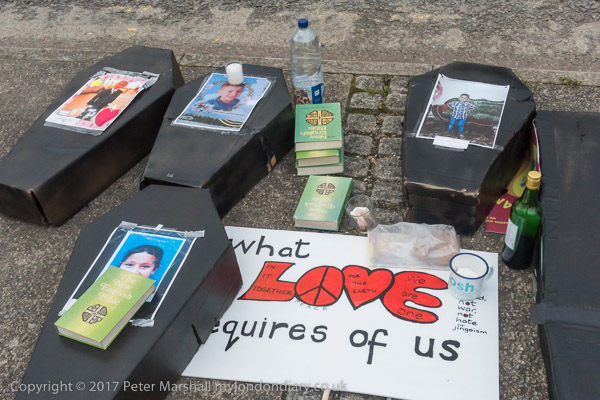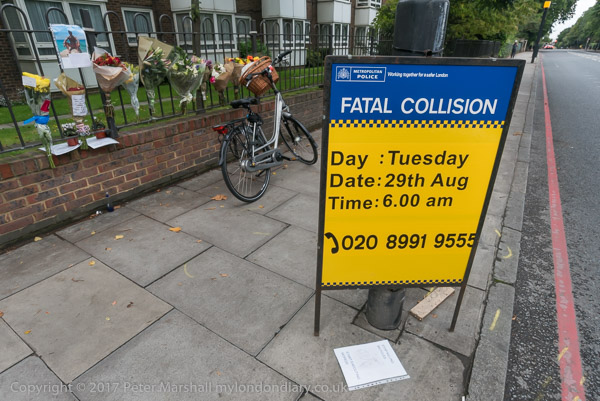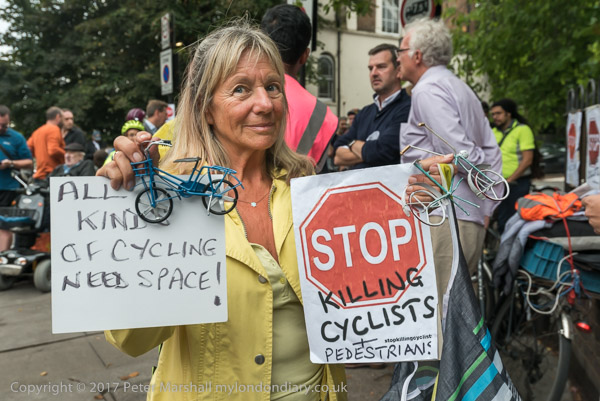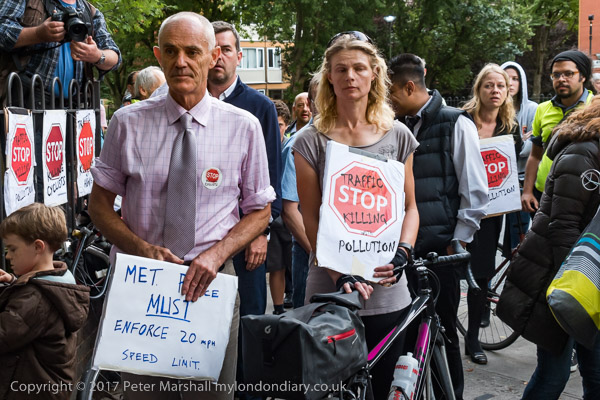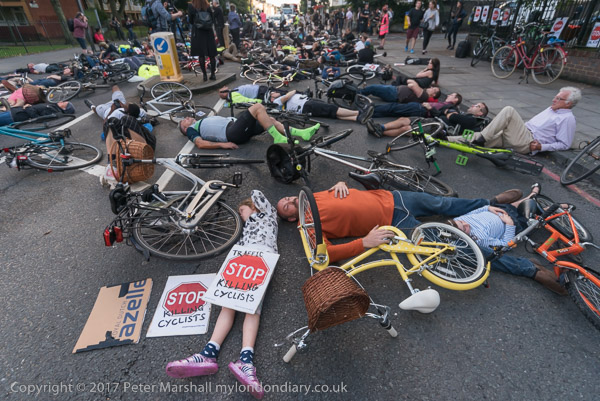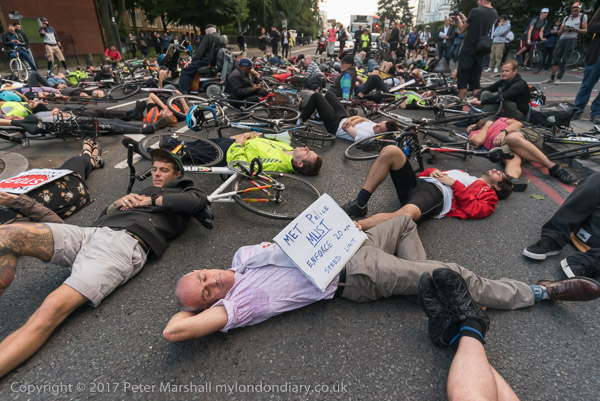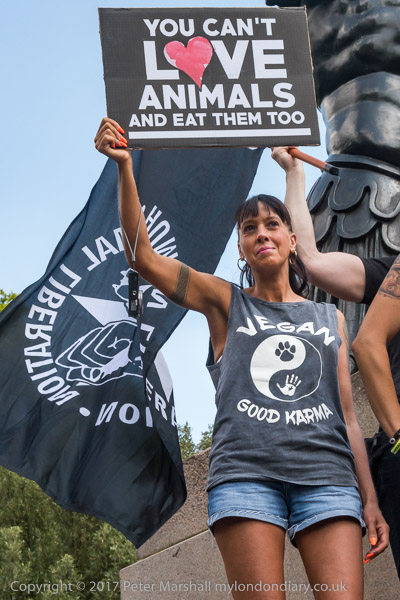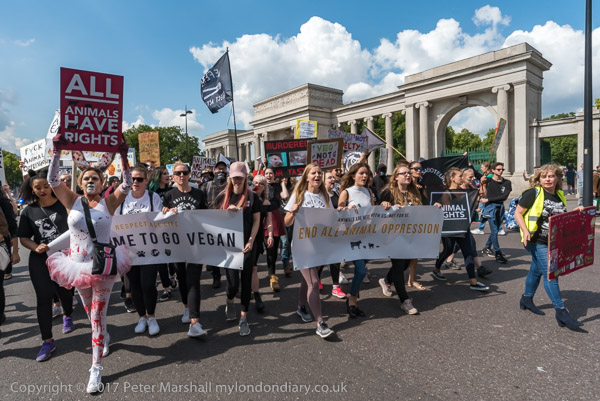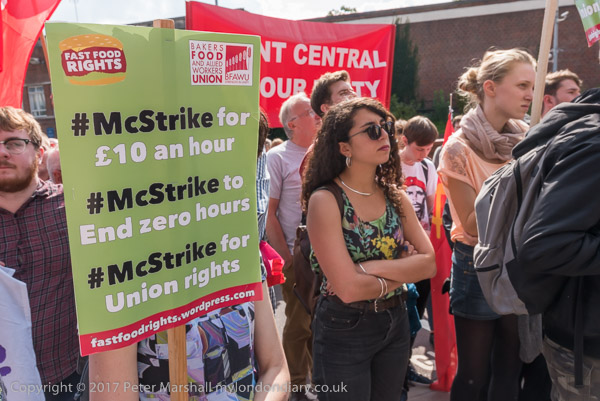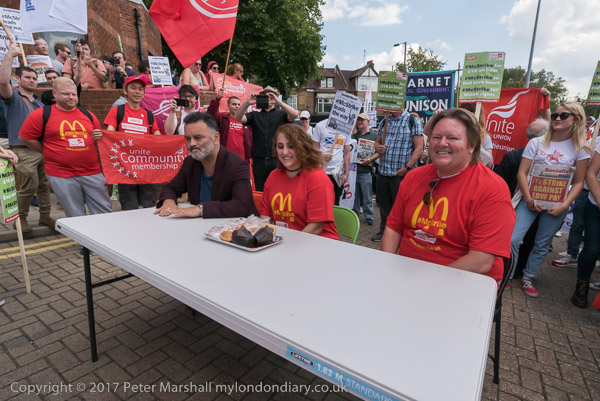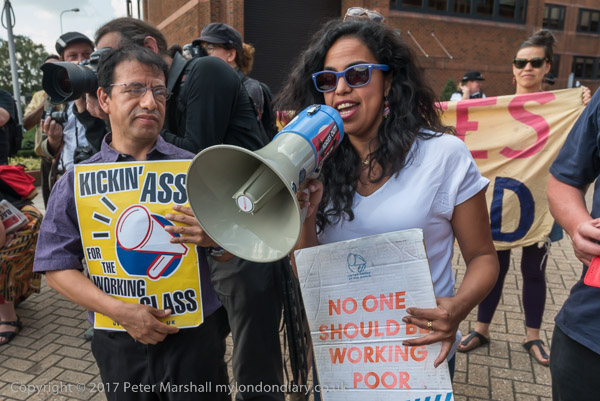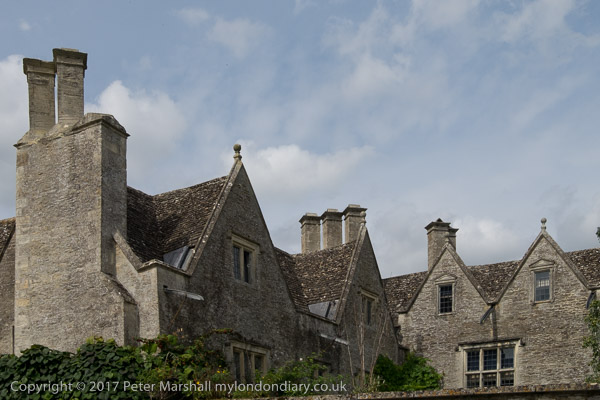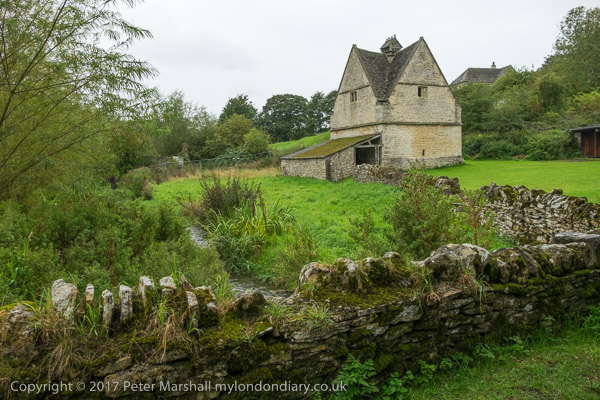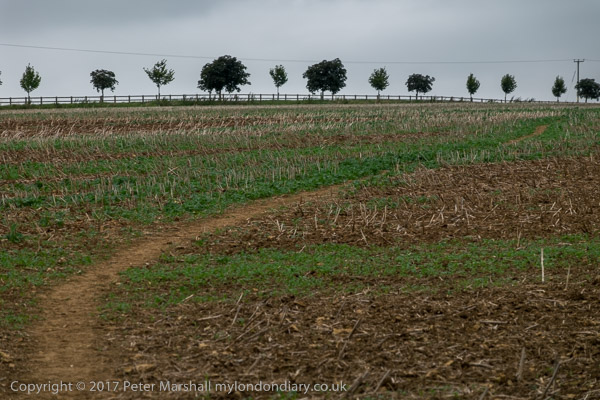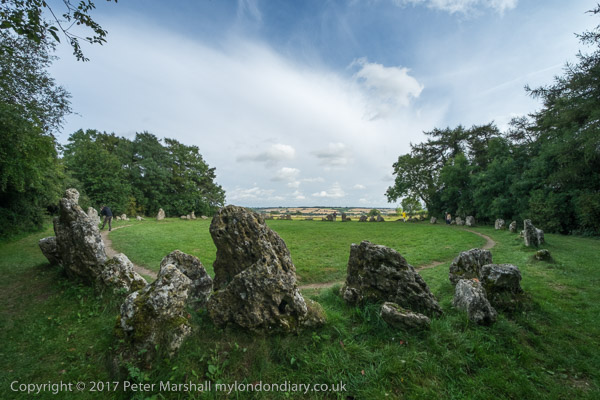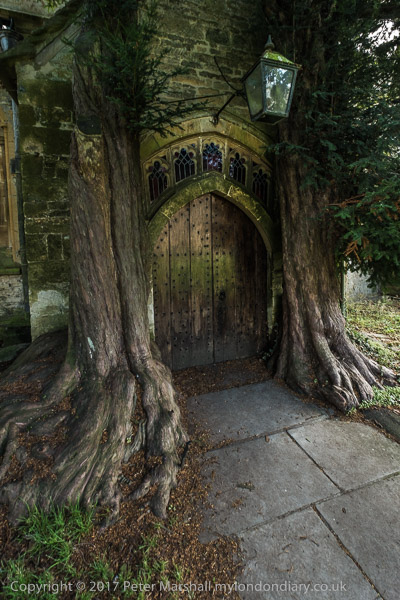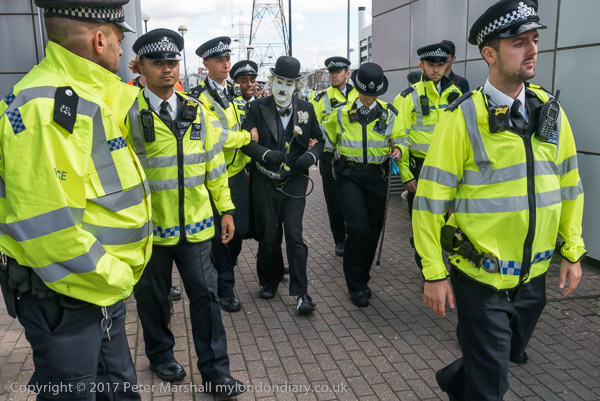
Friday I had a day off from the Arms Fair protests. It was an all day academic seminar, Conference at the Gates, on militarism and peace which sounded unlikely to be very visual, and I needed a day off to rest and catch up with other things. But I was there again on the Saturday, which was billed as the Big Day of Action, including Art The Arms Fair.
I started at the East Gate, where there were speakers, workshops, choirs and groups and a few attempts to stop cars and lorries going to the Arms Fair, but protesters were soon removed from the road by police and vehicles were only delayed by a few seconds
Things went quiet around lunchtime and I heard things were happening at the West Gate, so I jumped on the DLR and went to see, arriving just in time to see police leading away Charlie X, a Chaplin mime, which made for some rather surreal images.
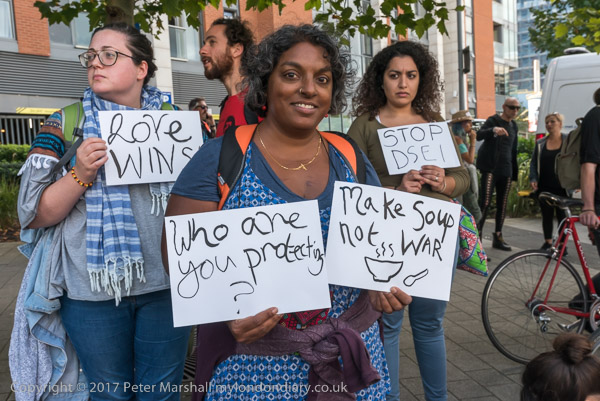
There were quite a few other protesters at the West Gate, some standing at the roadside with posters and placards, and others, including a ‘Critical Mass’ group who had ridden here with a sound system they were dancing to on the roundabout.
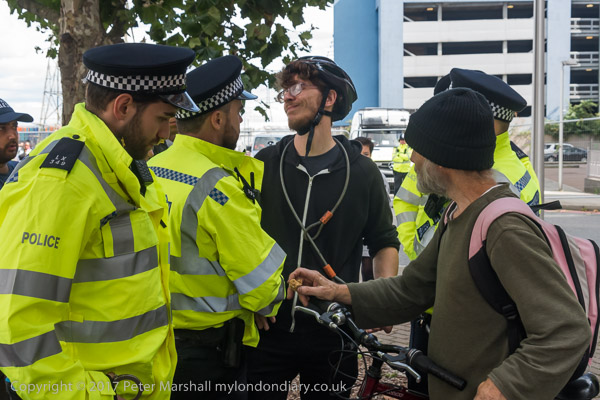
Police suddenly surrounded one of them who had been standing quietly on the roundabout and I wondered what was going on. After a minute or so they took him across the road and continued to question him. One of his friends came and went up to talk to him, asking the police what was going on – and when he found out the man was being arrested for having a bicycle lock around his neck, he told the police what he thought about this and was himself threatened with arrest.
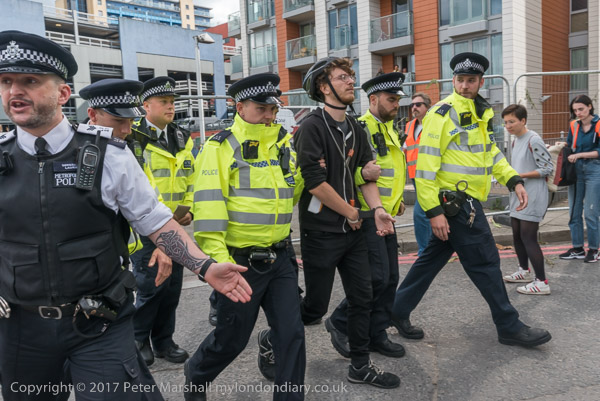
This was clearly the most bizarre arrest I’ve ever witnessed. The police had taken away a man who was standing wearing a bike helmet a couple of yards from his bike, and arrested him because he had a bike lock chain around his neck. Fortunately I think his friends looked after his bike.
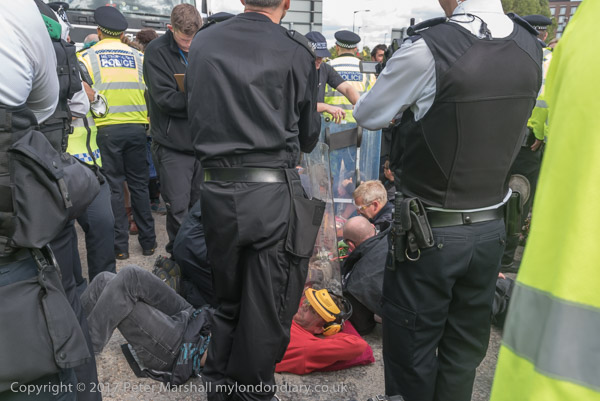
I went back to the East Gate to find a lorry had been stopped by another lock on, with the two people joined together surrounded by a tight ring of police and protesters surrounding them. After a few minutes most of the protesters went and sat down on the already blocked road, and I managed some clearer pictures.
There were perhaps a hundred people sitting in a large circle on the road, which was in any case blocked by the lock-on, but police (and police horses) decided to start moving some of them, warning them they might be arrested if they stayed on the road. The protesters pointed out that they were hardly obstructing the highway as the highway was already blocked, but police persisted and made a few move, arresting one woman who kept on arguing with them and rushing her away to a police van. The arrest seemed to satisfy their pride and they soon gave up hassling the rest of the protesters.
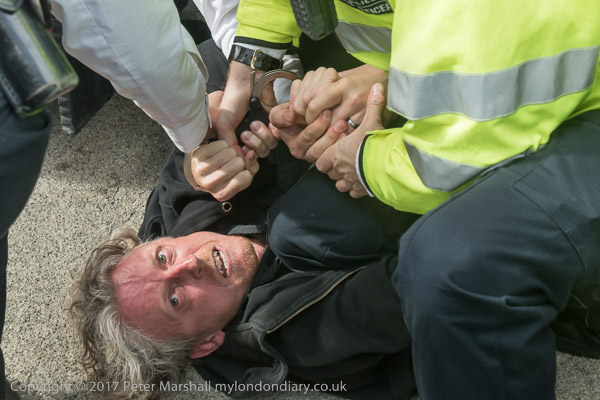
A few minutes later they cut the first of the two locked-on free, and led him away to another van, only to find a man lying under the wheels of the lorry. Police dragged him out, hand-cuffed him and carried him away.
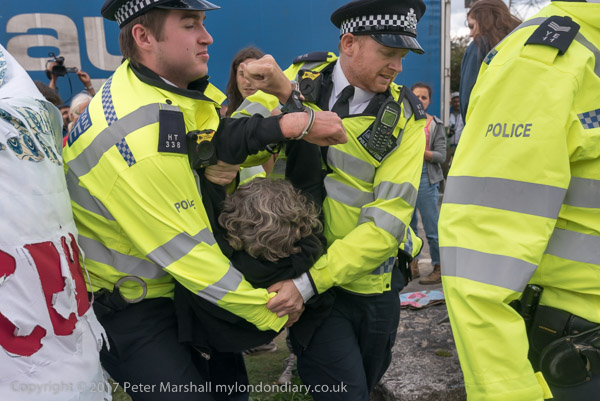
Meanwhile the ‘Art’ was continuing with a poetry recital, singing and dancing on the street and still well over 50 people were sitting or standing on the road in front of the blocked lorry.
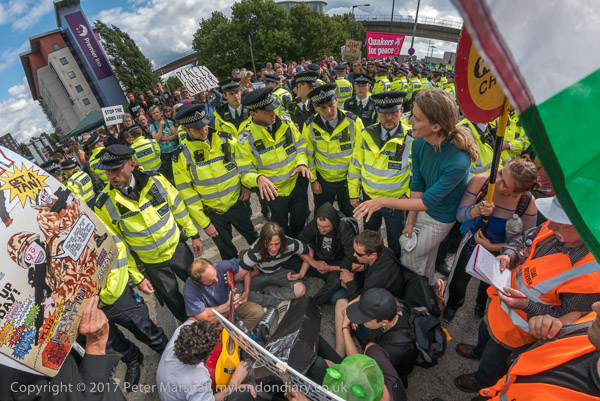
Police by now didn’t seem to know what to do, as there were perhaps too many people to arrest – or they simply couldn’t face the paperwork involved. They surrounded a group of eight who were sitting in a circle with linked arms and warned them, but didn’t try to make an arrest. I stood watching for some minutes and they were still there. Eventually I had to leave to go home, with the road still blocked.
CAAT (Campaign Against Arms Trade) continued their protests on Sunday and Monday, but I had other things to do. Altogether through the week of protest police made 103 arrests. Only around half of those arrested had charges pressed against them – and surely it would have been difficult to find an offence with which to charge a man carrying a lock for his bike. Most of those who were taken to court have been found not guilty, and the police have been told they gave insufficient weight to people’s right to protest in their policing. Nine people pleaded guilty and with 42 of the 48 remaining cases completed only 9 have been found guilty – though there are expected to be some appeals.
If the arms fair comes to ExCeL again in 2019, it seems likely there will be protests on an even larger scale, which police will find it very difficult to deal with. London clearly doesn’t want dirty dealing in arms on its patch.
DSEI Festival Morning at the East Gate
Festival of Resistance – DSEI West Gate
DSEI East Gate blocked
Continue reading Big Day of Arms Fair actions
